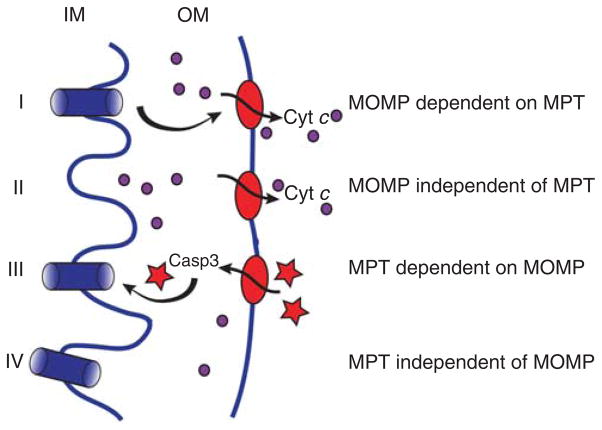Figure 3.
Mitochondrial membrane damage leads to cell death. Four different scenarios of inner or outer mitochondrial membrane damage lead to mitochondrion dysfunction (see Table 1). Opening of the permeability transition pore in the inner mitochondrial membrane (IM), leads to MPT, and can occur in isolation (IV) or can increase outer membrane (OM) permeability (MOMP), leading to leaking of cytochrome c (I). In addition, MOMP leading to cytochrome c release into the cytosol can occur independently of MPT (II). Finally, under certain conditions, OM permeability might allow entry of activated caspase-3 into the mitochondrial intermembrane space, which can lead to damage of the IM and result in MPT. Casp3; caspase-3; cyt c, cytochrome c; IM, inner mitochondrial membrane; MOMP, mitochondrial outer membrane permeability; OM, outer mitochondrial membrane.

